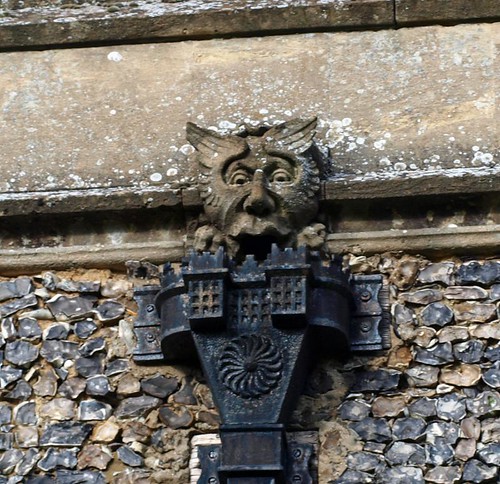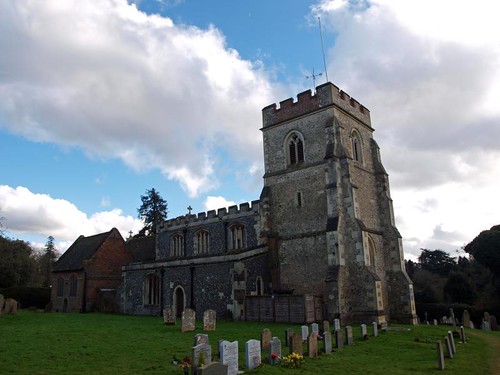ST MARY. Flint with stone dressings. Externally, including the W tower with angle-buttresses and a SE stair-turret, mostly C15 and C19 restoration (by Eden Nesfield & Norman Shaw, 1868). The only remarkable exception is the NE vestry of brick with three-light Perp windows. This belongs to the early C17. But inside the N and S arcade reveal a much older age. They are of the early C13, proof (just like those at Kimpton) of the long survival of Transitional forms into the E.E. style. For the short circular piers have capitals with slightly decorated scallops as well as a variety of water-leaf and also with stiff-leaf in two tiers. The arches are double-chamfered. The chancel arch looks late C13. The chancel windows are all renewed. - SCREEN. Two two-light sections on each side of the entrance. Each light has as its tracery an ogee arch and tiny Perp panelling above. - STAINED GLASS, S window by William Morris, 1867. Three arch-angels, wonderfully clear and fresh in the design; none of the mannerism of most Burne-Jones figures yet. The memorial tablet which goes with the window also evidently by Morris. How noble and susceptible to the nature of the glass-painter’s material does such a window appear, if one compares it with other Victorian stained glass, even the work of a man like Kempe (see, for example, his E window of 1901). - PLATE. Tankard, 1736.
* Mee is more enthusiastic however he very rarely does anything but wax lyrical; the more I read The King's England the more I find him a jingoistic hagiographer.
King’s Walden. It has hills rolling round it, and, having a royal name, it has a king and a queen to help to bear up the roof of its ancient church. They represent the unhappy Henry VI and his tragic wife Margaret of Anjou, and are set above the 700-year-old arcades which rest on capitals sculptured by the Normans. The church, which is mainly 15th century with an early 17th-century brick vestry, has a charming 15th-century screen, delightfully painted and equally beautiful on both sides, with exquisite tracery and elaborate little ornaments (some of them tiny gilded heads) picked out in reds and greens against a background of black and white. Keeping this lovely screen company is a modern oak figure of St George slaying the dragon, in memory of the men who did not come back. In the Jacobean vestry is a panelled screen in memory of Thomas Harrison, a shipowner who died in 1916, and the beautiful east window of the Crucifixion is in memory of his wife. They rest together in the shadow of the 14th-century tower, having been brought here from their beautiful home behind the church. The house stands among great trees with acres of gardens, being on the site of an Elizabethan house in which lived many of the Hales family who are remembered in the church.
About a mile away is the hamlet of Breachwood Green, where the Baptist Chapel has a pulpit made and dated in 1658, the year of Cromwell’s death. John Bunyan preached from it.
About a mile away is the hamlet of Breachwood Green, where the Baptist Chapel has a pulpit made and dated in 1658, the year of Cromwell’s death. John Bunyan preached from it.


No comments:
Post a Comment